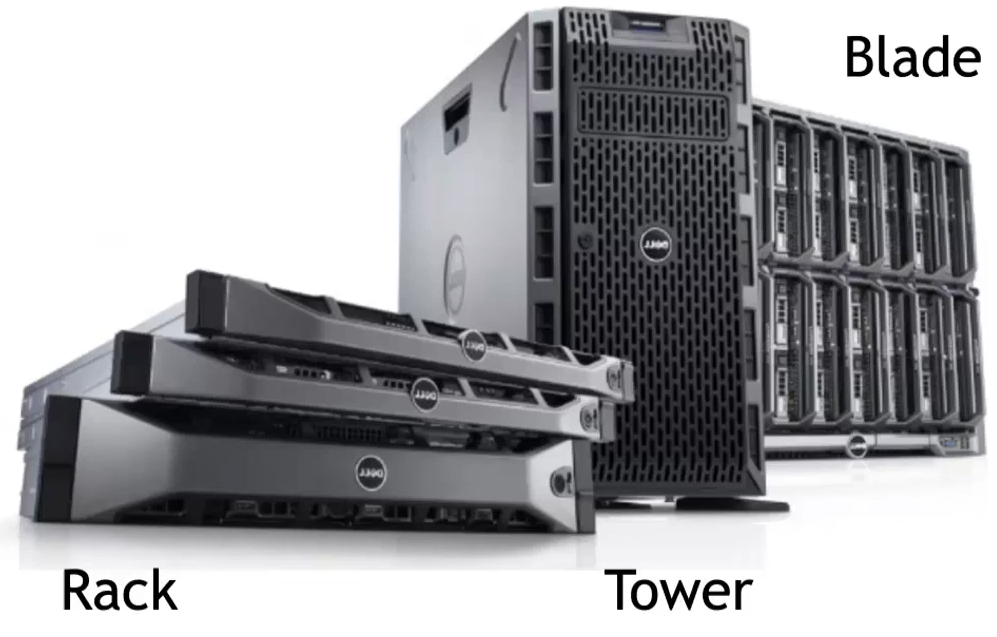Servers
Servers are organized in racks, blades, or towers and are the computational unit in data centers or WSC.
 {width=50%}
{width=50%}
Tower
A tower server looks and feels much like a traditional tower PC.
| PROs | CONs |
|---|---|
| Scalability and ease of upgrade | Consumes a lot of space |
| Cost-effective (cheapest servers) | Provides a basic level of performance |
| Cools easily (low component density) | Complicated cable management |
Rack server
| PROs | CONs |
|---|---|
| Failure containment | Power usage |
| Simplified cable management | Maintenance |
| Cost-effective |
Server racks use rack units, or “U”s, as a measurement. 1U equals 44.45 mm (1.75 inches).
Blade server
Blade servers are a new and advanced type of server that can be described as a hybrid rack server. These servers are housed in blade enclosures, creating a blade system. Blade servers are the smallest type of server available, making them ideal for conserving space.
| PROs | CONs |
|---|---|
| Load balancing and failover | Expensive configuration |
| Centralized management, all blades connected to a single interface | high component density → effort to avoid overheated |
| Cabling | |
| Size and form-factor |
Technologies inside servers
| Advantages | Disadvantages | |
|---|---|---|
| CPU | Easy to be programmed and * support any programming framework. | Most suited for simple models that do not take long to train and for small models with small training set. |
| GPU | Ideal for applications in which data need to be processed in parallel like the pixels of images or videos. | Programmed in languages like CUDA and OpenCL and therefore provide limited flexibility compared to CPUs. |
| TPU | Very fast at performing dense . vector and matrix computations and are specialized on running very « fast ML workloads | For applications and models based on TensorFlow/PyTorch/ JAX Lower flexibility compared to CPUs and GPUs |
| FPGA | Higher performance, lower cost . and lower power consumption compared to other options like . CPUs and GPU | Programmed using OpenCL and High-level Synthesis (HLS). Limited flexibility compared to other platforms. |